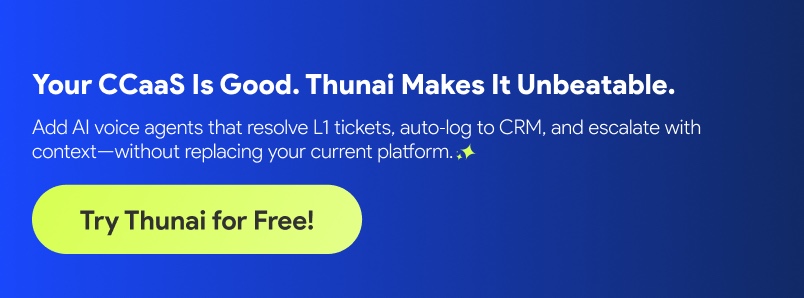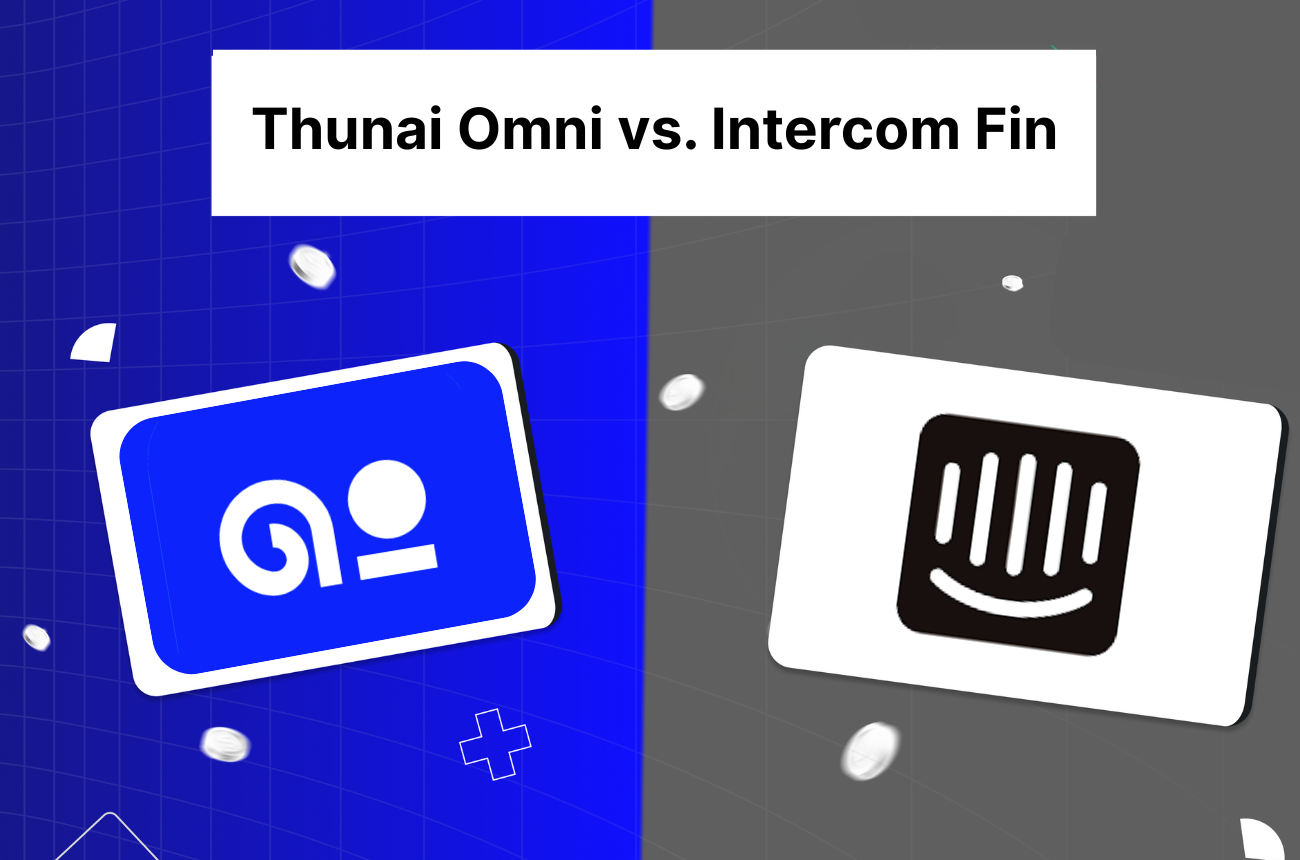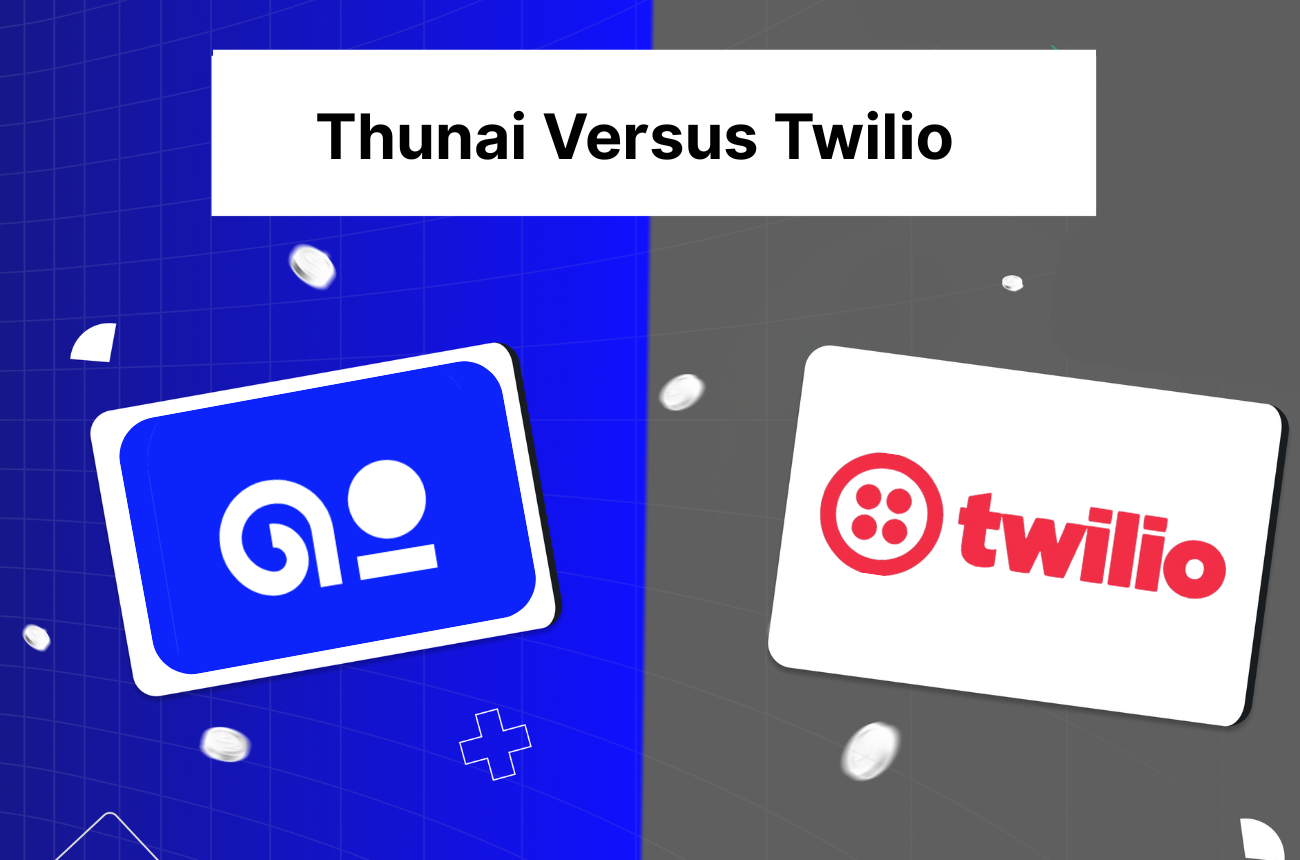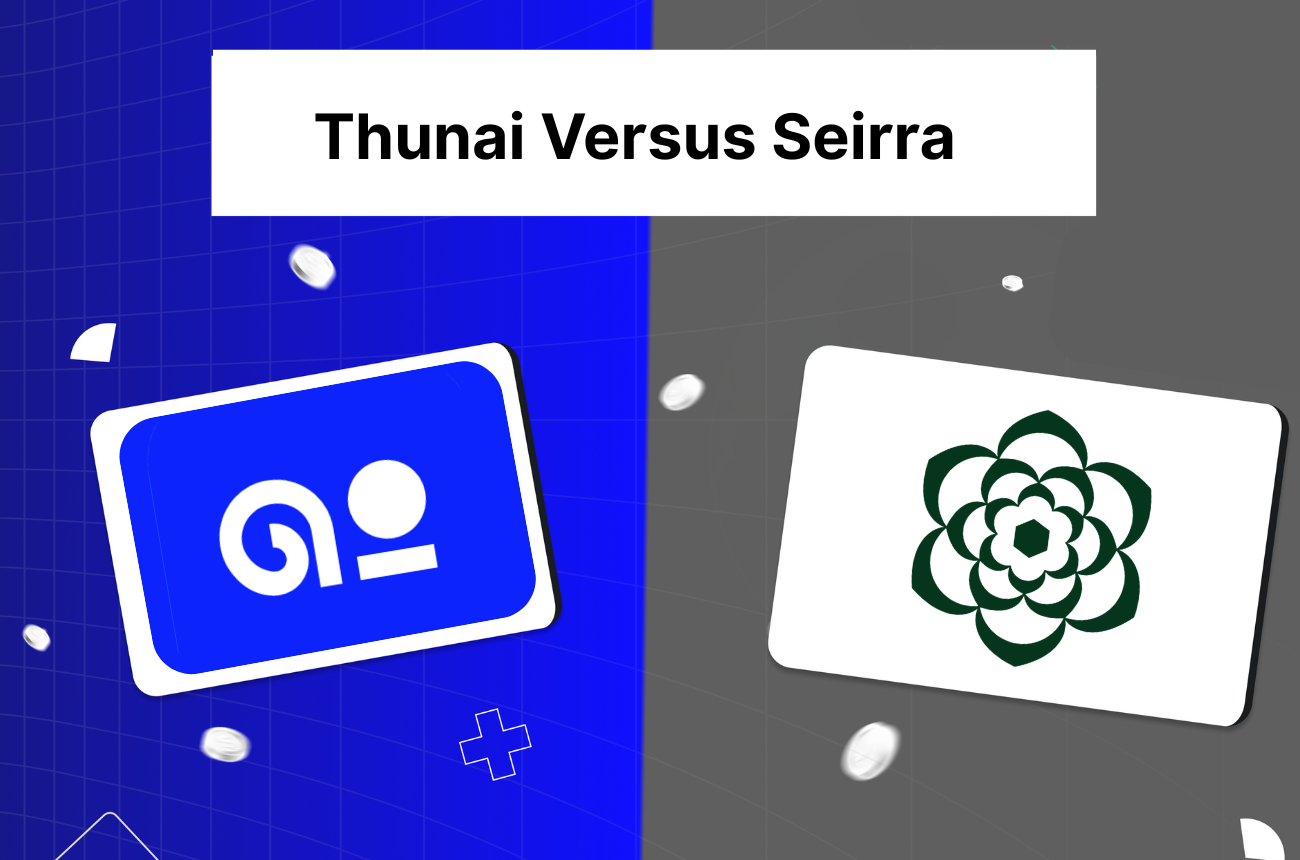Top 7 Essential Types of Call Center Integrations

.png)

Thunai learns, listens, communicates, and automates workflows for your revenue generation team - Sales, Marketing and Customer Success.
In the past, call center tools worked on their own. A dialing system, a customer database, and a call recording platform were all separate.
However, this separation brought about operational issues and a disconnected customer experience. Luckily, modern system integrations changed this model.
So to help you know the most helpful ones, this article will cover the types of call center integrations and top options to consider.
What are Call Center Integrations?
Call center integrations let separate applications work with each other, these also share data and help automate processes together as one system.
These integrations are set up to improve how a call center works. They help the call center deal with high volumes of customer interactions more effectively.
These are put together to form a central platform where all customer data is stored which makes the data easy for agents to access in real time.
This change is helped by open Application Programming Interfaces (APIs) that allow software to work with each other. The growth of cloud services like Contact Center as a Service (CCaaS) has also made high-level tools easier to get.

Top 7 Most Popular Types of Call Center Integrations
A modern contact center is a network of interconnected technologies. Many integrations are possible. A set of seven has stood out as essential for operational excellence. These call center integrations do not work alone. They form a deeply interdependent system. The value of one is greatly increased by the presence of the others.
1. AI and Workflow Automation Call Center Integrations
Artificial Intelligence is now a basic part of modern contact center operations. Its role has grown to include generative AI, predictive analytics, and real-time agent support. The global call center AI market was valued at USD 1.99 billion in 2024.
The market is projected to grow to USD 7.08 billion by 2030. This shows its major potential. The real-world situation, however, can be complicated. Some call center workers have talked about their frustration with new AI setups.
One user even pointed out that an AI summarization call center integration and tool was completely wrong and was just making things up.
How These AI and Workflow Automation Integrations Help
- Intelligent Self-Service: AI-powered chatbots and voice agents can deal with many routine customer questions 24/7. These include checking up on an order status or resetting a password. This moves a large number of simple calls away from human agents. This lets them focus on more complex, high-value problems.
- Smarter Call Routing: AI looks into customer data and the sentiment in a customer's voice. The system then routes them to the agent best suited to handle their specific issue. This predictive routing greatly improves First Call Resolution (FCR) rates.
- Real-Time Agent Assist: During a live call, AI can listen in and give agents real-time coaching. The system can also suggest relevant knowledge base articles. This is very useful for training new agents and keeping up a consistent service quality.
- Automated Post-Call Work: Generative AI can automatically put together accurate, brief summaries of calls and chats. This gets rid of a time-consuming manual task for agents. This also helps cut down on Average Handle Time (AHT).
Top AI and Workflow Automation Call Center Integrations
- Thunai: Thunai is a platform that has a suite of AI-powered features. These include intelligent call routing and AI agent assistance. Its Workflow Automation tool uses a low/no-code platform to connect customer data across systems like CRMs and ticket creation tools.
- Talkdesk: Talkdesk gives a range of AI tools, like virtual agents and AI-powered agent assistance. Its Customer Experience Automation (CXA) platform is made to automate interactions across the entire customer lifecycle.
- RingCentral: RingCentral's platform includes a personal AI assistant. This assistant can automate note-taking, generate call summaries, and supply live transcriptions. The platform also has an AI Receptionist to handle calls 24/7.
2. Analytics and Reporting Tools
Analytics tools pick up and interpret signals from every part of the contact center. Call center analytics is the practice of changing raw interaction and performance data into useful insights.
A common problem is not a lack of data, but too much of it - many contact center leaders are drowning in dashboards. They spend up to 40% of their day going over data across disconnected systems.
How These Analytics and Reporting Tool Integrations Help
- Data-Based Decisions: Analytics pulls data from different sources into single dashboard. This lets supervisors see key metrics at a glance. They can make immediate adjustments to improve performance.
- Find Out Root Causes: Instead of just knowing that AHT is high, analytics can show why. The system can link call duration with specific issue types. The system can also point out agents who may need more coaching.
- Synthesize Information: A good analytics call center integration does not just show more data. The system pulls information together into clear, useful intelligence. This supports better decision-making on everything from staffing to product development.
Top Analytics and Reporting Call Center Tools
- Thunai: Thunai has an analytics suite with real-time and your enterprise’s complete data on key performance indicators and a unified dashboard to track all metrics. Thunai also completes 100% QA and transcription on 100% of calls in real-time.
- Talkdesk IQ: A key strength of Talkdesk IQ is its advanced speech analytics. The platform gives deep insights into call center performance and customer interactions. This helps businesses figure out customer behavior.
- CallMiner: CallMiner is a conversation analytics platform. The platform uses AI to analyze 100% of customer interactions across channels. CallMiner has automated performance and sentiment scoring for quality management and compliance monitoring.
3. Workforce Management (WFM) Solutions for Call Centers
Workforce Management (WFM) call center integrations are the backbone of operational performance in a contact center. Its main job is to have the right number of agents with the right skills available at the right time. This includes forecasting future call volumes.
This also involves creating optimal schedules and monitoring real-time agent activity. Labor costs can make up two-thirds of a contact center's budget. This makes effective WFM very important for maximizing return on investment while creating a stable work environment.
How These Workforce Management (WFM) Integrations Help
- Optimize Staffing: WFM uses historical data and predictive analytics to predict future call volumes. This prevents chronic understaffing. Understaffing leads to agent burnout and high turnover.
- Improve Agent Experience: Modern WFM tools give agents more flexibility and control over their schedules. The tools can allow agents to swap shifts or bid on preferred hours. This is a key part of job satisfaction.
- Deliver High ROI: One study showed these solutions can bring in an ROI of over 600%. This amounts to an average return of $12.24 for every $1 invested.
Top Workforce Management (WFM) Call Center Integrations
- NICE WFM: As a long-time market leader, NICE has a complete WFM solution with AI-powered forecasting and scheduling. The system allows agents to bid for schedules and manage time-off requests through a self-service portal.
- Verint Workforce Management: Verint has advanced forecasting and scheduling tools that analyze historical data. The platform has real-time adherence monitoring. The platform also gives employees self-service abilities and mobile apps.
- Calabrio ONE: Calabrio's WFM suite is known for its modern, agent-centered design. The suite features AI-based forecasting and automated scheduling. The platform includes the MyTime app, which gives agents self-service options for managing their schedules.
4. Helpdesk and Ticketing System Call Center Integrations
The integration of a call center platform with a Customer Relationship Management (CRM) or a helpdesk system is one of the most basic links. This call center integration sets up the single source of truth about the customer.
The call center integrations with helpdesks and ticketing systems merges every interaction into one unified profile. When a customer gets in touch, the agent is instantly shown their complete history.
This allows for a personalized conversation from the start. As Malte Kosub, CEO of Parloa, says, the best returns from AI come about when AI is combined with rich internal data from systems like a CRM.
How These Helpdesk and Ticketing System Integrations Help
- Allow Omnichannel Support: This call center integration makes it possible to create tickets that carry on across channels. A customer can start on web chat and later call in. Every agent will have access to the full conversation thread.
- Get Rid of Repetition: This gets rid of the single biggest frustration for customers. They no longer have to repeat themselves.
- Produce Significant ROI: Businesses using help desk migration services report an average ROI over 900%. This is brought about by a 53% increase in operational performance, 37% in cost savings, and a 24% improvement in CSAT scores.
Top Helpdesk and Ticketing System Call Center Integrations
- Zendesk: Zendesk supplies a full customer service suite. The suite includes a ticketing system and omnichannel communication tools.
- HubSpot Service Hub: Part of the larger HubSpot CRM platform, Service Hub is a good choice for businesses. This is for businesses that want to closely link their customer service operations with sales and marketing data.
- Freshdesk: Freshdesk is a top call center ticketing system known for its user-friendly interface. Its key features include omnichannel support and automation of repetitive tasks.
5. Payment Gateways
For any call center that deals with financial transactions, integrating a secure payment gateway is a non-negotiable requirement. This type of call center integration lets agents or automated IVR systems process customer payments directly during the call.
The most important concern is security and compliance with the Payment Card Industry Data Security Standard (PCI-DSS). Experts see this call center integration as a very important tool for building up customer trust.
How These Payment Gateway Integrations Help Call Centers
- De-Risk the Environment: They use technologies like encryption and tokenization. Tokenization replaces sensitive credit card numbers with a unique identifier. This means sensitive data never gets into the call center's systems. This data is not stored, and is masked in recordings.
- Meet PCI-DSS Compliance: These call center integrations send sensitive data directly to the payment gateway. Only a token is sent back. This greatly lessens the call center's compliance requirements.
- Build Up Customer Trust: The call center integration is made to make the payment process both effective and clearly secure. This reassures customers that their sensitive financial information is protected.
Top Payment Gateway Call Center Integrations
- Authorize.net: A part of Visa, Authorize.net supplies a Virtual Terminal. This lets businesses securely send in manual orders over the phone. The platform also includes advanced fraud detection tools.
- Stripe: Stripe has a very flexible and developer-friendly platform. Its Invoicing feature lets businesses send invoices and request payments. Stripe also supports many payment methods.
- PayPal: PayPal has a Virtual Terminal feature as part of its PayPal Payments Pro solution. This is made for taking payments by phone. This lets agents enter customer card details into a secure web interface.
6. Voice Analytics and Speech Recognition Tools
A voice analytics call center integration gives you the tools to listen in on customer conversations. You can then figure out 100% of what is said. This process brings out helpful information from the data. Knowing the difference between Speech Analytics and Voice Analytics is important.
Speech Analytics turns call audio into text to look at the words. Voice Analytics, or Emotion AI, looks at the tone and pitch of a speaker's voice. This helps you understand their emotional state.
How These Voice Analytics and Speech Recognition Tool Integrations Help
- Find Out Root Causes: This call center integration can show that a spike in call times is due to customer confusion about a new product. The integration can also show that low CSAT scores are linked with agents using negative language.
- Point Out Training Gaps: By analyzing language and emotion, these tools can point out agent training gaps. The tools can also help with product improvements. They also help in understanding the voice of the customer.
- Improve Customer Loyalty: Forrester research found out that customers are 2.4 times more likely to stick with brands that listen and solve their problems quickly. Voice analytics is the main tool to do this at scale.
Top Voice Analytics and Speech Recognition Call Center Integrations
- Balto: Balto is special for its real-time guidance. Balto listens to calls as they happen and gives agents live coaching and dynamic prompts. Its platform helps agents improve performance in the moment.
- CallMiner: A leader in post-call analysis, CallMiner's platform takes in and analyzes 100% of interactions. The platform uses AI to perform sentiment analysis and automatically score interactions.
- Observe.AI: This platform is centered on automating quality assurance and simplifying coaching workflows. The platform transcribes and scores calls with high precision. This helps QA teams expand their reviews.
7. Unified Communication Platforms
The final type of call center integration is with a Unified Communications as a Service (UCaaS) platform. A CCaaS platform handles external, customer-facing communications. A UCaaS platform manages a company's internal communications.
While a UCaaS platform combines tools like voice, video conferencing, and instant messaging. Linking the CCaaS and UCaaS platforms breaks down the wall between the front-line contact center and the rest of the company.
How These Unified Communication Platform Call Center Integration Help
- Resolve Complex Issues Faster: If a customer has a technical question, a UCaaS call center integration lets the agent see the availability of a subject matter expert (SME). The agent can start a chat. The agent can even add them to the customer call.
- Get Rid of Hold Times and Callbacks: This smooth collaboration gets rid of long hold times while an agent looks for help. This also prevents the need for multiple callbacks. This leads to a much faster and more accurate resolution.
- Use Company-Wide Expertise: This improves workflows. This also uses the knowledge of the whole company to serve the customer. This creates a more agile and responsive business.
Top Unified Communication Platform Call Center Integrations
- RingCentral (RingEX): A leading name in cloud communications, RingCentral has a full platform for voice, messaging, and video meetings. The platform is built to connect with a long list of business applications.
- Microsoft Teams: As a key part of the Microsoft 365 ecosystem, Teams is a dominant tool for internal collaboration. Teams has chat, video meetings, and calling. Teams Phone is also increasingly linked with contact center solutions.
- Webex by Cisco: Once a meeting tool, Webex is now a full communications suite with calling, chat, and video. Cisco has been adding AI features. These features include real-time transcription and automatic meeting summaries.
What to Consider When Setting Up Call Center Integrations
The first step in any call center integration project is to ground it in clear business goals, not just technology features.
- Before looking at software, leadership must lay out objectives, like lowering customer churn by 15%. After setting goals, prioritize cloud-based, or CCaaS, solutions.
- Do this for their ability to grow and their flexibility. When looking at vendors, check their Service Level Agreements (SLAs).
- Look for an uptime guarantee of 99.999% for constant availability. Security is also very important. Make sure the vendor complies with regulations like GDPR and CCPA.
- Also make sure that the data is encrypted. Finally, the human element of change management is a deciding factor. A clear plan for agent training and internal communication is needed to make sure the new system is fully used.
Why are Call Center Integrations Beneficial?
The biggest advantage of system integrations is the major improvement to the customer experience (CX). Research shows that 71% of consumers expect personalized interactions. 76% of them become frustrated when this does not happen.
- Call center integrations deliver this by giving agents a full view of the customer. This results in quicker problem-solving.
- This also causes a large increase in First Call Resolution (FCR) rates. Top-performing call centers have an FCR rate of 74% or higher. The effect on the agent experience (EX) is just as important. call center integrations solve swivel-chairing.
- This is the constant switching between disconnected systems. They do this by setting up a unified agent desktop. This lessens agent stress and burnout.
- These are the main causes of high turnover rates. These improvements lead to real business results. 58% of US customers are willing to pay more for a brand that gives a better customer experience.
Challenges When Setting Up Call Center Integrations
One of the most common challenges is the presence of older, on-premise systems.
Many businesses are stuck between old legacy systems that do not easily connect and the promise of new, agile tools.
- These older systems often lack open APIs. This makes connecting them difficult and expensive. This is a main cause of data silos. Even with modern tools, projects can have high upfront costs.
- They can also have a long setup period. Sometimes, getting a real return on investment can take months or even years.
- The most underestimated challenges are human-centered. If a new AI tool creates inaccurate information, the tool does not lessen agents' workload. Instead, the tool adds a new layer of frustrating digital janitorial work.
- Failing to design systems with a human-centered view can damage customer trust. This can also cancel out any performance gains.
Why Use Thunai: The One Call Center Integration That Does It All
Thunai is the definitive AI platform designed to unify and automate your entire call center operation. It delivers measurable results through a single, intelligent integration.
- Unify Your Operations: Thunai acts as your central AI hub, integrating your CRM, helpdesk, and knowledge base into one seamless, automated system.
- Automate Level 1 Support: Deploy smart voice, chat, and email agents that instantly resolve up to 90% of routine customer inquiries, freeing up your human agents for high-value tasks.
- Empower Live Agents: Provide real-time "Smart Suggestions" during calls to handle any question, while seamless AI-to-human handoffs preserve full context for complex issues.
- Eliminate After-Call Work: Automatically sync call summaries, outcomes, and action items to your CRM the moment a call ends. Eradicate manual data entry forever.
- 100% Call Scoring + Transcriptionl: Stop random call sampling. Thunai automatically scores every single interaction and analyzes sentiment, giving you precise, data-driven insights for coaching.
Ready to turn every agent into your top performer? Schedule a free demo today
FAQs on Call Center Integrations
What is the 80/20 rule in a call center?
The 80/20 rule, or Pareto Principle, suggests that 80% of outcomes come from 20% of causes. In a call center, this often means a small number of issues cause most of the call volume. Understanding this helps managers focus on the most important problems to improve service.
Which CRM is best for call centers?
The best CRM for call centers depends on your company’s specific needs, but integrating one is a foundational step for any contact center. This system acts as the single source of truth for all customer information. Popular choices often include Zendesk, Salesforce Service Cloud, HubSpot Service Hub, and Freshdesk.
What are the tools used in a call center?
Modern call centers use a network of connected tools to manage operations and customer interactions. Key technologies include a CRM for customer data, AI for automation, and analytics dashboards for performance tracking. Other common tools are used for workforce management, secure payments, and unified communications.
What are the 5 key performance indicators of a call center?
Call centers track many metrics, but five of the most essential KPIs are First Call Resolution (FCR) and Average Handle Time (AHT). They also closely monitor Customer Satisfaction (CSAT) scores to gauge the customer experience. Finally, Call Abandonment Rate and Average Speed of Answer (ASA) are used to measure operational performance.






